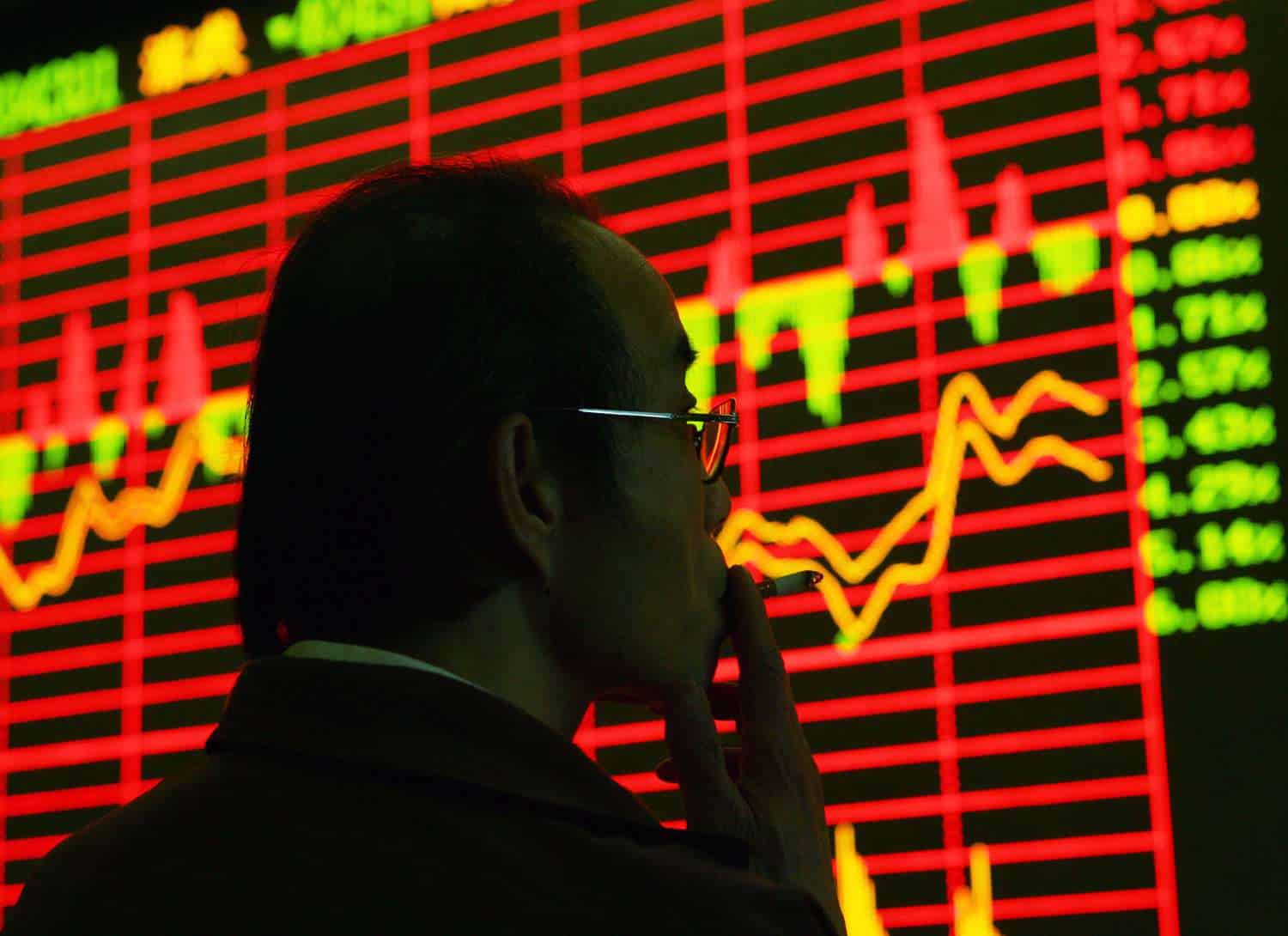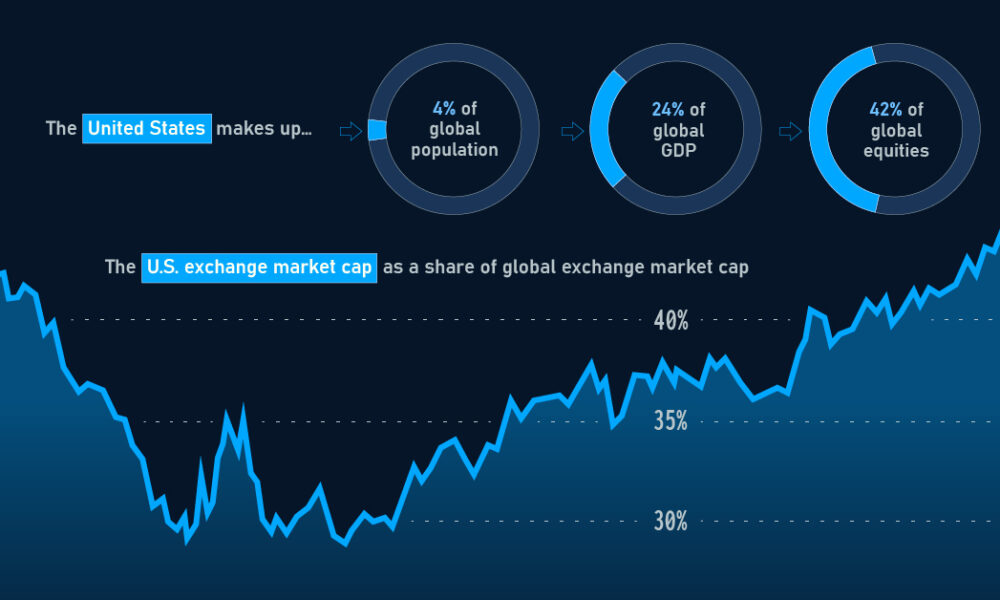What triggers a stock market recovery? That’s the million-dollar question for investors clinging to the hope of a rally. When stocks tumble, it’s easy to get lost in the chaos. However, there’s a science to the rebound, a method within the madness. In this deep dive, we’ll peel back the layers hiding the factors that kick-start a market’s rise from the ashes. From parsing economic signals to dissecting government moves, we’re on a journey to map the mysteries behind a market’s comeback. If you’ve ever wondered how the invisible hand tips the scales toward growth, keep your eyes here. We’re about to uncover the rally’s secrets together.
Understanding Economic Recovery Indicators and Stock Market Resurgence Catalysts
Deciphering Economic Recovery Indicators
Jobs, sales, and how much we make are big clues to an economy kicking back into gear. Think of these as health signs for our country’s cash flow. More jobs mean more people can buy stuff. When folks buy more, shops sell more, and factories make more. This circle of cash starts small and then snowballs. It shows us if we’re heading to a sunnier money place or not. We watch these signs to guess if stocks will jump back up.
Identifying Stock Market Resurgence Catalysts
Now, what makes a down market wake up? First, it’s big news when big companies report good earnings. This shows they’re doing something right, and it pumps up our trust. Next, when the Fed steps in with rate cuts or money boosts, it’s like a market pep talk. It can fire up a bull market—where prices rush up like a bull stampeding. Also, trading lots of stock shares can signal a rush back into the game after a scare.
Calm policies from our leaders can steady nerves, and when they spend more cash, it can speed things up. If they cut down on what it costs to borrow money, people might buy more homes or start businesses. Then, companies grow and stock prices often follow. We keep an eye on these moves because they often kick-start a rally in the stock push-and-pull.
Let’s talk about confidence. It’s king in getting a down market to turn around. If people feel good, they invest more bucks, betting on growth. Big-time investors sniff out these vibes; they know when folks are likely to dive back in. So, they might use some fancy chart-watching to make smart moves right before everyone else.
Sometimes, money from far-off places pours in, showing confidence in our market. Or maybe prices for stuff we dig out of the ground—like oil or metals—go up or down. These swings can rock the stock boat, too. And let’s not forget, when other countries are making more goods and earning more cash, they can buy from us. That’s more good news we like to see.
In all this, we track what’s spent, lent, and sent. It helps us spot a time when stocks might shoot up. So, we pull out our magnifying glass and look close as we can at these sparks. It’s a mix of expert reading, drop-in ideas, and some good, old-fashioned gut-checks. This way, we can wave at the bulls before they start their run and give you a head’s up to be ready to ride.
Now, none of this is magic; it’s hard-nosed looking at facts and feelings. It’s all about catching the next wave before it rolls by—and that’s what we’re here to help you do. One eye on the charts, one ear to the ground, and always sniffing the air for that change that says, “Here comes the sun.” That’s how you catch a stock market wake-up call.
Navigating Market Sentiment and Liquidity in Forecasting Bull Market Triggers
The Role of Market Sentiment Analysis in Anticipating Recovery
What sparks hope in a nervous stock market? It’s the vibe—the market sentiment. This feeling spreads like a wave among investors, hinting at what’s to come. It makes us ask, Is confidence returning? When folks feel better about the economy, they invest more. That’s investor confidence restoration at work.
Market sentiment analysis is my compass. I look deep into how folks feel about their money and their future. It tells me where we are headed. Are people scared, or are they ready to jump back in? I comb through news, reports, and even tweets. Yes, social media buzz matters too!
This buzz, it’s a hidden signal. It points me to a stock market comeback before it happens. It’s a crucial part of the puzzle for anyone eager to catch the bull market triggers.
Assessing Market Liquidity Conditions Impact on Bull Market Timelines
Now, we have something else that’s super key: market liquidity. Think of liquidity like the market’s blood—it keeps everything moving. When there’s lots of it, money flows easy, and stocks can bounce back faster. When it’s dry, it’s like the market’s stuck in mud.
So how do we check the market’s pulse? One quick look: trading volume increase. It’s like an EKG for the stock market. If volumes pump up, it means there’s cash ready to keep the wheels turning. Another clue is the central bank’s moves—like interest rates and quantitative easing. They can open the taps or close them, shaping the path to recovery.
These pieces, market sentiment and liquidity, are what I keep my eyes on. They’re telling. They show me the health of the market and when a recovery could take flight.
Cash flows, vibes, all that jazz—they’re the beat of the market’s heart. And knowing what makes it tick? That’s the golden ticket to spot the bull market triggers early.
Analyzing Centrals Banks’ Impact and Government Policies on Market Stability
Central Bank Interventions as Mechanisms for Recovery
Central banks can kickstart a market recovery. Think of them like market doctors. They diagnose problems, like slow growth or high inflation. Then they act. How? They can lower interest rates. This makes borrowing cheaper. Companies can invest, hire, and grow. They might also do something called quantitative easing. This is like pouring water on a thirsty plant. It means buying assets to pump money into the economy. This can boost investor mood and stock prices.
Central bank actions matter a lot. They boost investor trust in tough times. When investors see a central bank step in, they think, “It’s safe to go back in the water.” They start buying stocks again. This demand can turn a bear market into a bull market. A bear market is when stock prices drop for a long time. A bull market is the opposite. It’s when stock prices are on the rise.
Government Fiscal Policies and Their Effects on Stock Market Dynamics
Now, let’s talk about government moves. The government can change how much it spends and taxes. We call this fiscal policy. When the government spends more, people have jobs. They have money to spend. This is good for business. When businesses do well, their stock prices often go up. That’s part of the stock market recovery.
Tax cuts can also play a part. If people and companies pay less tax, they keep more money. They can spend or invest this money. This can help stock prices grow.
But remember, it’s a fine balance. Too much spending can cause inflation. That’s when prices keep climbing up. If it gets too high, it hurts the economy. And it can scare off investors.
Every action by a central bank or a government can move the market. Sometimes, it’s like a nudge. Other times, it’s a big push. The key is knowing how these moves connect to market health. They can make the line on the stock chart go up. And that’s what gets a market recovery going.
Both central banks and governments have tools to help. They use these tools to bring back financial market stability. They help restore investor confidence. Knowing about these tools helps us understand market recoveries. After all, we all want our investments to grow. When central banks and governments act, they can start the train rolling towards a market recovery.
Linking Global Economic Developments to Market Recovery Opportunities
Exploring the Influence of Global Economic Trends on Equities
When things look grim for stocks, hope shines from abroad. Global trends can signal better days. When foreign markets do well, U.S. stocks often follow. Countries across the world trade a lot with each other. If they buy more from the U.S., companies make more money. When firms abroad hire more, U.S. companies may sell more goods. More jobs in other places can mean more cash for U.S. stocks.
Market watchers keep their eyes on these overseas clues. They help us guess if a rally may be close. For example, if Europe’s economy grows, that’s good news for U.S. companies. Many big U.S. firms sell to Europe. So, if Europeans have more money, they can buy more U.S. goods. That helps U.S. stock prices go up.
In Asia, fast growth can spur U.S. stocks too. Asian countries like China buy lots of stuff from the U.S. If Asia’s doing well, they’ll buy even more. This means more profit for U.S. companies. And that can boost U.S. stock markets.
Sector Rotations and Their Implications in Stock Market Recoveries
When investors feel brave, they invest in risky stocks. These are often in tech or new companies. But when times are tough, they switch. They move to safer areas like utilities or food. This is a sector rotation. It’s a big sign of change in the market.
In crisis times, money flows to safe stocks. These are firms that keep doing well, even when times are hard. As things look up, money starts moving again. It goes from safe stocks to those that grow fast. This switch can light up a market recovery.
Sectors matter a lot. Some lead the way, others follow. Tech often leads a rally. It’s full of fast-growing firms. When tech stocks jump up, other sectors often come right behind. Keeping an eye on sector shifts helps us pick winners early.
Health care is also key. It doesn’t swing as much in bad times. This makes it a safe place for cash. But as investors get bolder, they may move money out of health care. They’ll put it into sectors with more room to grow. Watching health care can tell us a lot about investor mood swings.
The energy sector is a wild card. When oil prices drop, energy stocks hurt. But if oil prices rise, energy stocks can lead a market charge. We look for signs in oil price moves to feel out a stock lift.
Investor moods reach far. They affect sectors differently. Some sectors spring up fast at hints of a recovery. Others wake up slower. By keeping tabs on these shifts, we can get ahead of a market bounce. We spot when investors get their courage back. And we see where they want to put their money next. This info is gold for riding the wave of a stock market recovery.
In this post, we broke down key signs that point to economic bounce-backs and what sparks stock market comebacks. We looked at how to read into the health of the economy and which elements give stocks a boost.
We then dove into market mood and cash flows to see how they signal upswings in the market. These are big hints that a bull market might be on the way.
We also checked out how big banks and government choices stabilize and shape markets. Their moves can really make or break market confidence.
Lastly, we connected bigger world economic shifts to chances for market recovery. We explored how changes in global affairs play into stock markets and how changing our focus to different business areas can pay off during recoveries.
In wrapping up, understanding these indicators and policies is vital. They shape your investment journey and can help you make smart choices. Keep your eyes on these signs and you might find good chances to grow your money. You’ve got this!
Q&A :
Sure! Here you’ll find a set of FAQs for the keyword “What triggers a stock market recovery?” optimized for both users and search engines.
What are the main factors that trigger a stock market recovery?
The path to a stock market recovery is often paved with a variety of factors. Key drivers include improvements in economic indicators such as GDP growth, employment rates, and consumer confidence. Additionally, a stock market recovery can be encouraged by positive corporate earnings reports, reduction in geopolitical tensions, and supportive monetary policies from central banks like low-interest rates. Positive market sentiment, often influenced by the news cycle and investor psychology, can also play a pivotal role in triggering a recovery.
How do government interventions impact stock market recoveries?
Government interventions can significantly influence stock market recoveries. Strategies such as fiscal stimulus, like tax cuts or spending on infrastructure, can boost economic activity and improve corporate profitability. Central bank actions such as lowering interest rates or implementing quantitative easing can make borrowing cheaper, encourage spending, and increase liquidity in the financial system. These interventions are aimed at stabilizing the economy, which, in turn, can bolster investor confidence and help trigger a stock market recovery.
Can investor sentiment alone trigger a recovery in the stock market?
While investor sentiment is a powerful force, it typically cannot trigger a stock market recovery on its own. Sentiment drives short-term market movements and can initiate a recovery trajectory if investors begin to collectively shift their view on the market’s prospects. However, a sustained recovery usually requires tangible improvements in economic conditions, corporate earnings, and other fundamental factors. Nonetheless, a positive shift in investor sentiment can be an early indicator of an upcoming recovery as it often precedes economic data.
Does the global economic outlook affect the chances of a stock market recovery?
Yes, the global economic outlook has a significant impact on the chances of a stock market recovery. Many stock markets are interconnected, and a positive or negative economic climate overseas can influence domestic markets. Factors such as global trade relationships, foreign policy, international conflicts, and worldwide commodity prices play a role in shaping the economic outlook. A positive global economic forecast can improve investor confidence and catalyze a stock market recovery.
What role do corporate earnings play in stock market recoveries?
Corporate earnings are a cornerstone in stock market recoveries as they reflect the health of companies and the broader economy. When businesses report strong earnings and positive forward-looking guidance, it suggests that the economy is on a firm. This can lead to more investments as investors seek to capitalize on profitable companies, driving stock prices up. Conversely, a pattern of declining earnings can dampen investor enthusiasm and delay a market recovery.
Each of these questions is designed to be informative and answer common queries related to the processes and factors involved in stock market recoveries. Including targeted keywords and providing clear, concise answers can help improve SEO performance and provide value to the audience.



